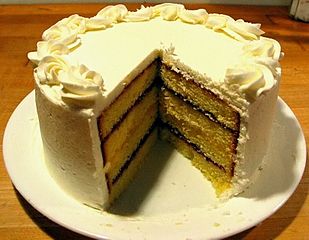Seeing is believing, but smellizing – a new term for prompting consumers to imagine the smell of a product – could be the next step toward more effective advertising.
Researchers came to this conclusion through four studies of products most of us would like to smellize: cookies and cake.
Professor of Marketing Maureen Morrin of Temple University’s Fox School of Business co-authored Smellizing Cookies and Salivating: A Focus on Olfactory Imagery to examine the impact imagining what a food smells like would have on consumer behavior.
“Before we started this project, we looked for print ads that asked consumers to imagine the smell of the product, and we found none,” Morrin said. “We think it’s because advertisers don’t think it’ll actually do anything.”
But researchers found that smellizing — imagining a smell —increased consumers’ desire to consume and purchase advertised food products.
Consumers’ response to advertised food products was measured over several studies that looked at the effect of smellizing on salivation, desire and actual food consumption. The researchers found that imagining what a tasty food smells like increases these types of responses only when the consumer also sees a picture of the advertised product.

An example of a print advertisement used in the “smellizing” studies.
Participants who looked at print advertisements were prompted by questions such as: Fancy a freshly baked cookie?; Feel like a chocolate cake?; and Feel like a freshly baked cookie? Look for these in a store near you.
Morrin found that these types of headlines had a positive impact on desire to consume the product, if they were accompanied by a call to also imagine the smell of the food. This positive impact was strongest when the image of the product could be seen at the same time study participants imagined the smell.
According to the study, olfactory imagery processing is different from that of the other senses, especially vision.
“It has been shown, for example, that although individuals can discriminate among thousands of different odors and are reasonably good at detecting odors they have smelled before, they are quite poor at identifying the odors they smell,” the study said. “That is, individuals often have difficulty stating just what it is they happen to be smelling at any particular moment, unless they can see the odor referent.”
This may be why a picture is so important in activating the effects of smellizing.
When asked (versus not being asked) to imagine a scent with a visual, participants’ salivation increased by .36 to .39 grams in two of the studies. In another study, when asked to imagine a scent with a visual, participants consumed 5.3 more grams of the advertised cookies. These effects depended on seeing the advertised food while imaging its smell.
The researchers also found that actually smelling the advertised products was even more effective on the various measures of consumer response than merely imagining the smells. But it’s not always feasible to present consumers with product odors in advertisements.
According to Morrin, advertisers are not adequately tapping into the power of the sense of smell when developing promotional messages to encourage consumers to buy their products.
Morrin’s study, co-authored with Aradhna Krishna of the University of Michigan and Eda Sayin of Koç University in Turkey, appears in the Journal of Consumer Research.
If our reporting has informed or inspired you, please consider making a donation. Every contribution, no matter the size, empowers us to continue delivering accurate, engaging, and trustworthy science and medical news. Independent journalism requires time, effort, and resources—your support ensures we can keep uncovering the stories that matter most to you.
Join us in making knowledge accessible and impactful. Thank you for standing with us!

